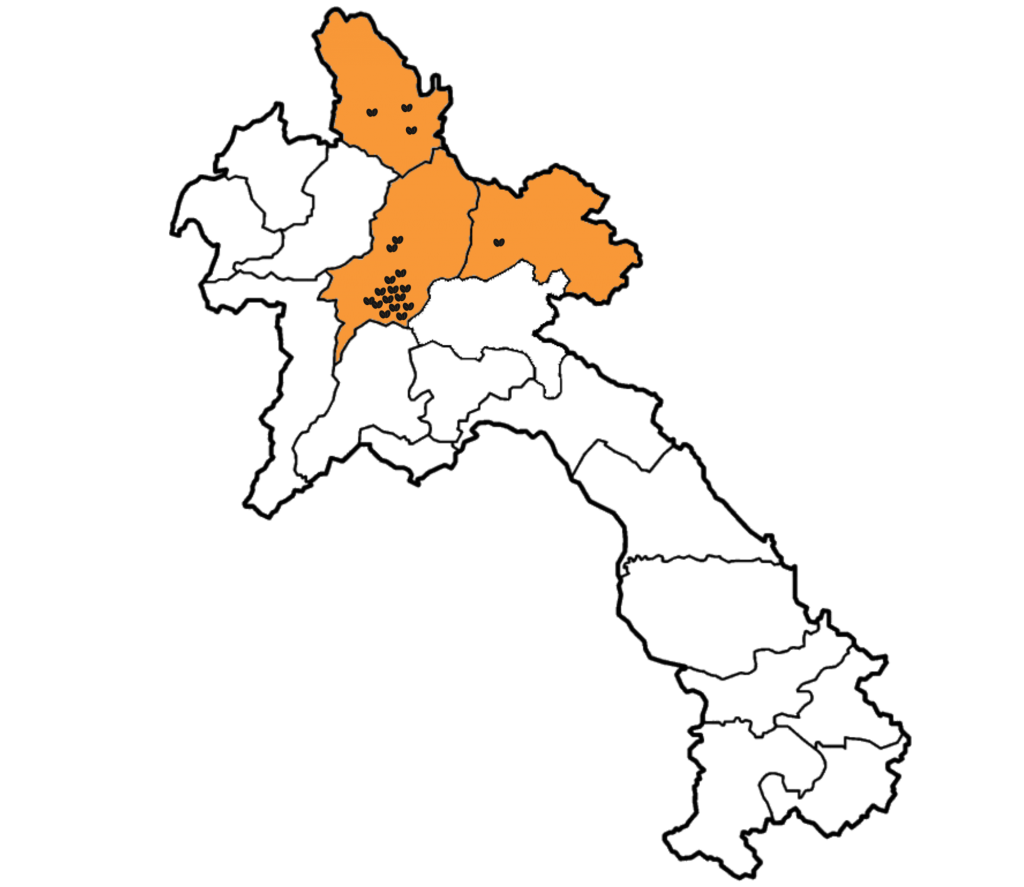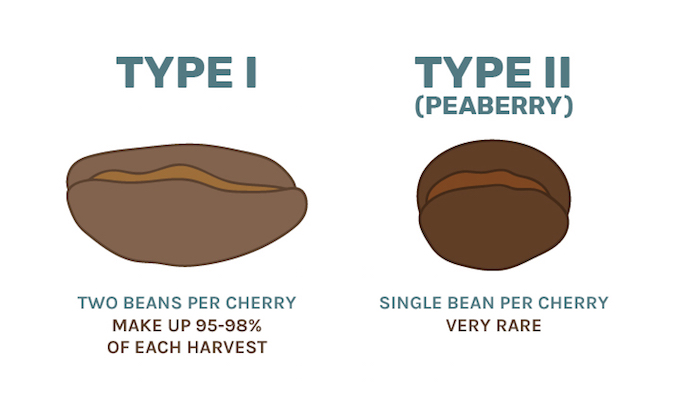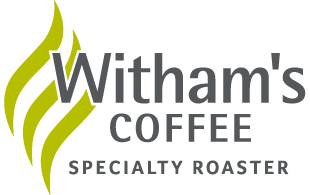Laos Peaberry (Saffron Coffee)
About Laos and its Coffee Production
Laos produces two main types of coffee: Robusta and Arabica. Robusta is mainly used for regular coffee as well as a typical coffee drink in Laos where it is sweetened with condensed milk. The latter, Arabica, is of a higher quality due to its mild taste, and it is used for espresso. For the 20,000 tons of coffee that Laos produces a year, 5,000 tons are Arabica beans and 15,000 tons are Robusta.
The Arabica beans produced in Laos “are known for their medium body and a combination of mild citrus and floral tones.” Laos produces Robusta coffee at high altitudes (1300 m.a.s.l.) unlike other countries. 95% of its coffee is harvested in the Bolaven Plateau. Coffee is Laos’ fifth-largest export product. The Bolaven Plateau, where coffee was first planted in Laos during the French colonial times, is the primary region of production for Laos. Several species were planted including Arabica, Robusta, and Liberica.
While Laos is one of the few countries in the world able to boast about its high-quality coffee beans, the production serves as much more than a simple bragging right. The coffee industry proves to be vital to Laos’ economy and its standard of living. Most farmers in Laos would be earning a significantly lower income if they were to produce common crops such as soy, rice, corn, etc. However, coffee production allows them to earn a salary that is sufficient to educate their families. Coffee also serves as Laos’ main export commodity.
Laos’ abundant farmers, land resources and suitable climate make for a high probability of producing Arabica coffee in large quantities.
Where does Laos Peaberry come from?
Our Laos Grade A comes direct from Saffron Coffee, in the World Heritage city Luang Prabang, in the Luang Prabang province of Northan Laos, produced by a collective group of small local farmers (Hmong, Mien, Gasak and Khmu hill tribes)
Laos Grade A is shade-grown under the forest canopy at an elevation of between 800 – 1400 MASL on the high mountain peaks and plateaus or Northan Laos, it is also Organic with no chemicals, fertilisers or any nasty additives


Who is Saffron Coffee?
Saffron Coffee was born in 2006 to establish a viable alternative cash crop for hill tribe villagers in northern Laos, who in the early 2000s were unable to rely on the now outlawed opium harvest for much of their income and livelihood.
Shade-grown Arabica coffee is a positive pathway out of poverty and into greater freedom of choice for the Hmong, Yao (Mien), Gasak and Khmu villages with which Saffron Coffee works with.
Saffron now process 12-15 tonnes of green coffee per year. Whilst this is a modest volume by any global measure, were focused on long-term viability and so progress has by necessity been steady and measured. The necessary time has been taken to establish meaningful, durable partnerships with villages and individual farmers, and to secure essential mindset change in regard to the real potential and merits of coffee farming as an alternative to other existing crops.
Steady development over 12 years has allowed Saffron to establish credibility and trust amongst the local stakeholders especially as the social and financial benefits enjoyed by the impacted villages are tangible, evidenced and transformational. As such, Saffron also partners with a number of non-government organisations and charities to promote coffee to farming families in Northern Laos, spanning across; 4 provinces, 36 villages, and 800+ farmers.

What is Peaberry?
Peaberry, known in Spanish as caracolillo, meaning “little snail”, because of its more rounded shape, is a natural mutation of a coffee bean within the cherry. Normally the fruit (“cherry”) of the coffee plant contains two seeds (“beans”) that develop with flattened facing sides, but sometimes only one of the two seeds is fertilized, and the single seed develops with nothing to flatten it. This oval (or pea-shaped) bean is known as peaberry. Typically around 5% of all coffee beans harvested have experienced this peculiarity. Peaberry beans are hand-sorted from the crop. Peaberry beans are complex and full of flavour.

Tasting Notes for Laos Grade A
| Country of Origin | Laos |
| Screen Size / Grade | Peaberry |
| Bean Type | Arabica |
| Varietal | Catimor |
| Bean Appearance (green) | |
| Acidity | |
| Body | |
| Bag Size | |
| Harvest Period | |
| Description | |
| Tasting Notes | Chestnut, Cocoa Powder, Roasted Peanuts, Brown Sugar, Wheat |
| Strength | |
| Processing Method | Fully Washed |
| Altitude | 800 – 1400 MASL |
History of Coffee in Laos
The first few coffee plants were introduced to the country and soils of Laos by French colonists around 1915. After trial and error of trying to harvest coffee beans in the north, the French realized that southern Laos was ideal for plantations. Millions of years ago there was a volcanic eruption in the south, causing the southern soils to contain rich minerals ideal for coffee production. The south is also where the Bolaven Plateau is, which remains as Laos’ primary region of production.
The Bolaven Plateau is located in the area known as Paksong, where vegetation is verdant all year round. Not only does its rich soil serve as the reason for ideal coffee production, but so does its high altitude of 800 to 1350 meters and cool climate.
For the past twenty years and continuing, the government of Laos has been working with coffee harvesters to plant more Arabica plants, since it yields a higher price, thus, increasing the income of farmers. There are 20,000 coffee-growing communities in 250 villages in Laos and many of these families depend on coffee farming as a living.
Interested in some Laos Peaberry?
Visit our Laos Peaberry page or Espresso Bar to buy a bag of our Laos Grade A.
